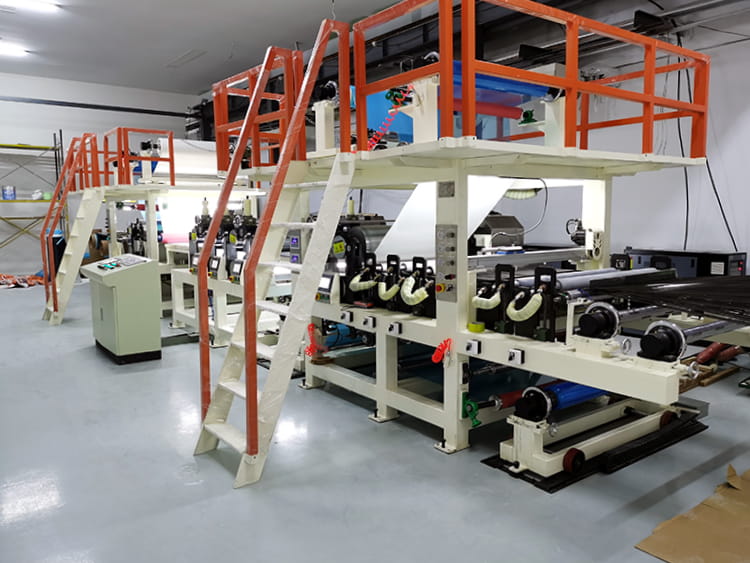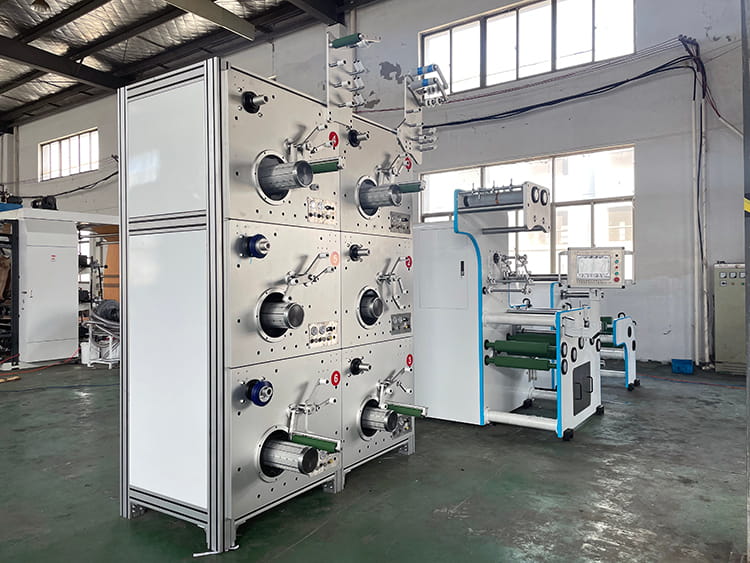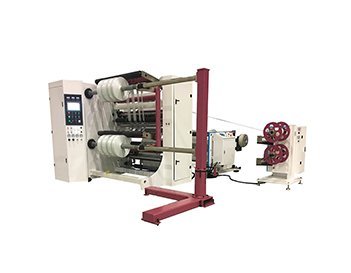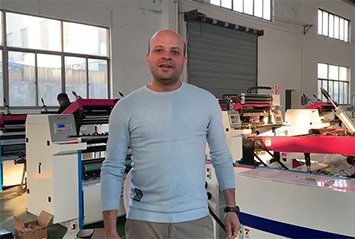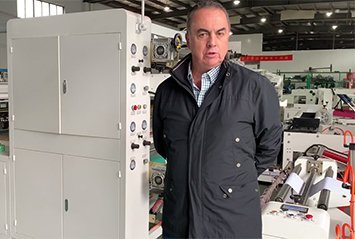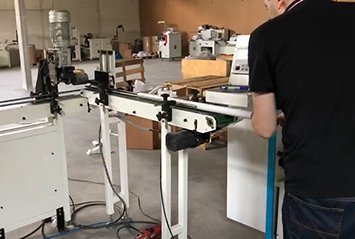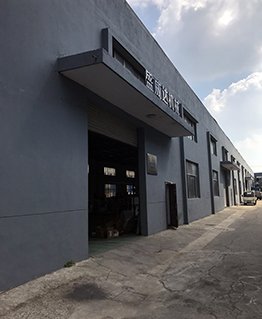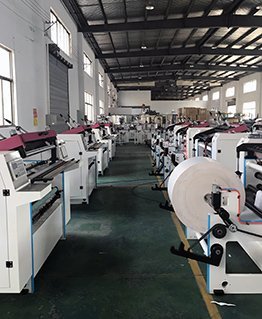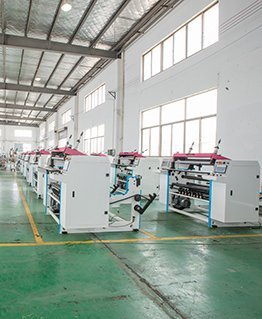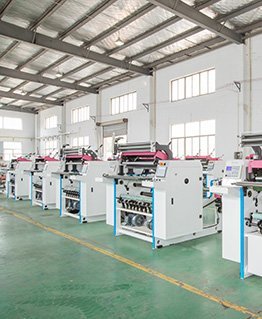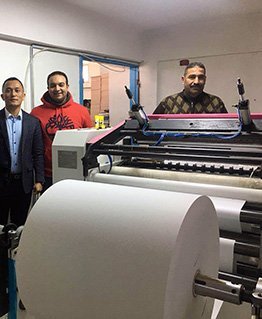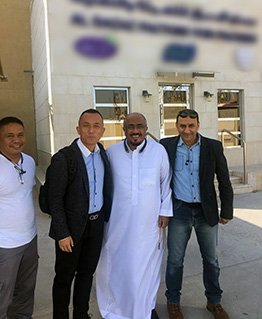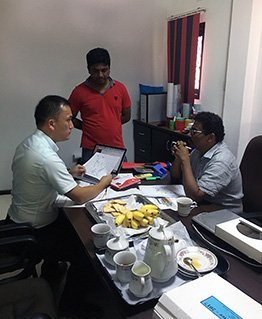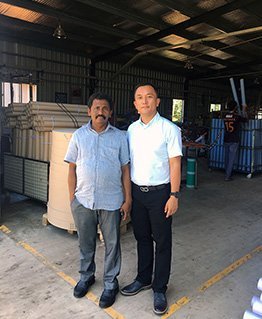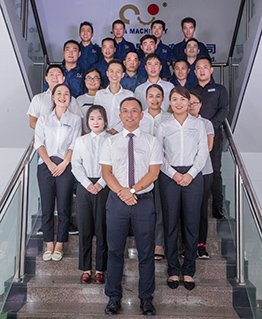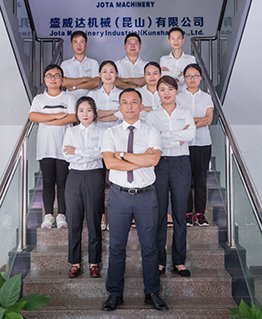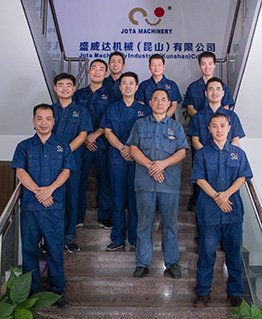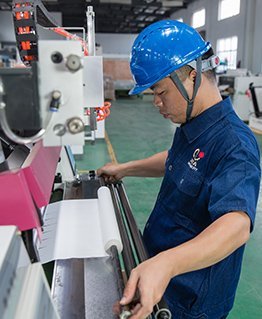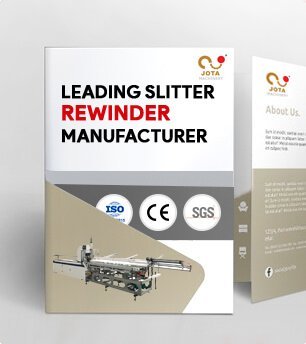Aerospace Technology Technical Team
- High-end technology used in aerospace
- Leading AFP Technology Manufacturer
- Profession service team
- First-class advanced equipment
Automated Fiber Placement Technology
In 2021, our composite products will extend from the original continuous thermoplastic fiber-reinforced ud tape line, unidirectional tape slitting traverse spooling machine to the automated fiber placement technology used in aerospace.
We provide not only equipment but also a mutually beneficial overall solution. Please contact us if you need any assistance.
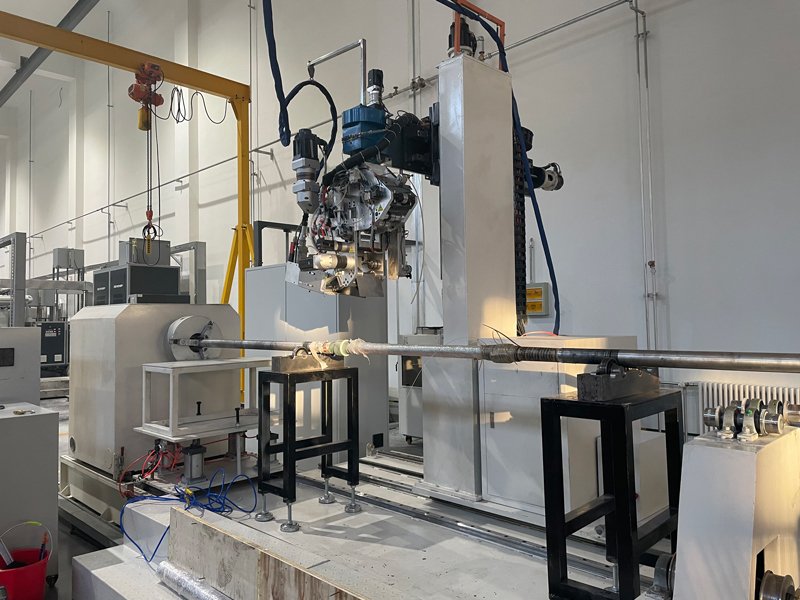
Leading Automated Fiber Placement Manufacturer
Jota is able to manufacture 30 sets of automated fiber placement equipment in 1 month with our own CNC center.
Foothold wall and precision parts could be made by ourselves, machine quality could be guaranteed.
You could just send some prepreg materials to us, we could test it, then share the testing video with you.
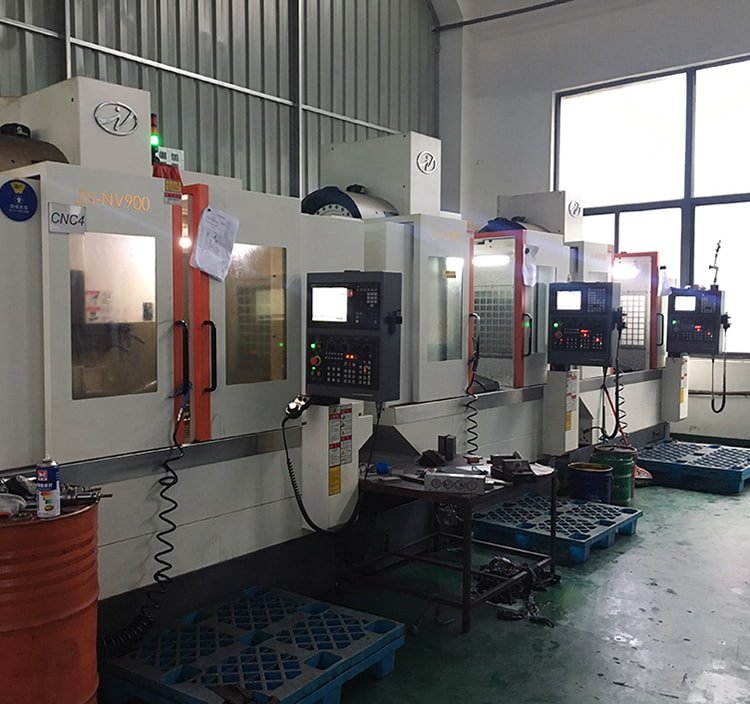
Jota CNC Center
Machining Material
- Visible high-quality components.
- Famous brands such as Siemens, Yaskawa, Delta, Schneider, Mitsubishi.
- Self-supporting CNC processed sheet metal, precision parts.
- Assembly raw materials provided by long-term cooperation suppliers.
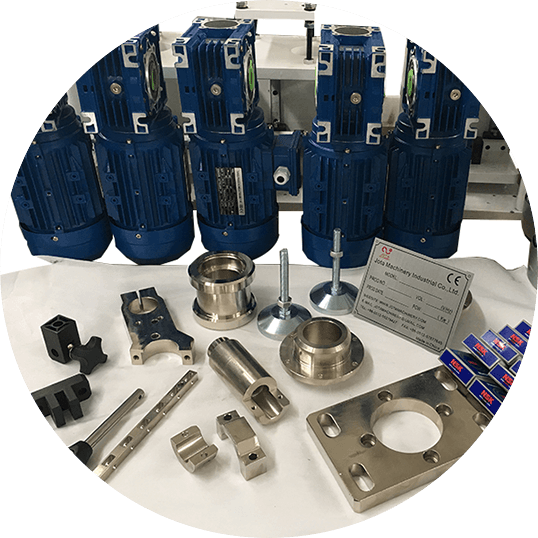
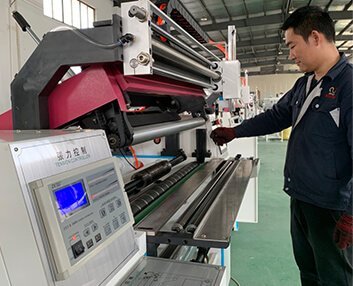
Installation and operation user manual, wire connection diagram, tension controller guide.
Installation and operation video tutorial.
One-on-one remote video call assistance.
On-site installation and operation guidance.
- Focus Factory
- Dear Customer
- Professional Team
Around 30-45 days, mainly depends on machine type.
Sure, it is our honor to work for you.
We will offer you some parts as backup, in case any part is broken within one year, we will sent you for free.
Sure, if we have client in your country, we will offer.
PEEK, PPS + Carbon/Glass Reinforced Production Line
When it comes to thermoplastics, manufacturers usually strive to find the best and most appropriate material as per the product they’re producing.
That is, if it’s a golf club, then the material needs to be both strong and lightweight. The material used in making the golf club should have a high tensile strength to withstand high rigidity.
And that’s where materials like PPS (polyphenylene sulfide) and PEEK (polyetheretherketone) come in handy.
Both PEEK and PPS have become increasingly common as manufacturers prefer their high-quality surface finish, ease of use, and consistent properties.
Because of this, PEEK and PPS materials are applicable in making consumer electronics, athletic shoes, golf clubs, automotive parts, surgical instruments, etc.
Now… Since these materials are applied in different industries, and for different uses, it means they’re designed differently as well – thereby different production lines.
In other words, PEEK and PPS materials can be reinforced using carbon (or glass) fibers to improve their properties.
How is this done? Well, this is possible by either dissolving the PEEK + carbon fiber or by hot melting them. This process is known as impregnating.
When impregnated, the outcome material usually has better, improved properties. For instance, the reinforced material exhibits increased rigidity, improved creep strength, and balanced dimensional stability.
Therefore, manufacturers take these prepreged materials and use them to design and further manufacture their products.
At Jota Machinery, we specialize in prepreging PPS, PEEK + carbon fibers using the hot-melt method.
What’s hot melt?
Basically, hot melt is a two-step method that uses heat and pressure to impregnate the polymers (PEEK and PPS) and carbon/glass fibers.
We’ll look more into that later.
Now that we have an idea of what prepregs are, let’s delve a little deeper into understanding the nitty-gritty when it comes to PPS and PEEK + carbon fibers reinforcements.
I mean, what exactly are PPS and PEEK? How are PEEK and PPS reinforced? Should you use Jota Machinery for prepreging? What’s the prepregging process like? Why does Jota offer the best-reinforced prepregs? Etc.
The best way to answer these questions is by using the FAQs format. So let’s go ahead and do that.
What Are Reinforced PEEK and PPS? And Why Are They Better When Reinforced?
While both PEEK and PPS offer qualities of better mechanical properties to help manufacture products like automotive parts, they’re even better when reinforced with carbon or glass fibers.
Individually, either carbon fibers or PEEK material are great structural units. But when reinforced, the final product usually has enhanced properties – which are better than both materials used in making up the composite material.
This means the composite’s performance is much better than before. The reinforced material exhibits an increased mechanical strength while guaranteeing high rigidity.
At the same time, the composite material displays improved dimensional stability and a much better creep strength. This is exactly why manufacturers prefer reinforced PEEK and PPS materials.
What’s even better, the reinforced materials can now withstand high temperatures hence high thermal stability. When reinforced with glass fiber, PEEK exhibits increased radiation resistance and has low moisture absorption.
All these improvements in PEEK and PPS materials due to reinforcement make them suitable for harsh chemical environments. Which makes them best applicable in industrial applications, e.g. in gas and oil sectors.
What’s the difference between a normal PEEK (or PPS) and a reinforced one?
As we’ve already mentioned, reinforced PEEK and PPS materials have better mechanical strengths and higher rigidity. Once reinforced, the materials display the following:
- Excellent flow and low shrinkage, which helps with precision molding in the manufacture of electrical sockets and connectors
- Superior mechanical integrity in terms of stiffness
- A much better thermal stability thus can withstand high temperatures
- Increased resistance to radiation, with low moisture absorption
- Amazing chemical resistance, thus making the reinforced materials insoluble in common solvents
- Incomparable resistance to high doses of gamma radiation
From the improved properties, the reinforced PEEK and PPS materials become versatile in terms of their applicability. The materials are suitable for manufacturing products that can withstand high temperatures and resist exposure to moisture.
As a result, manufacturers can use these reinforced materials as parts exposed in high static loads.
In summary, PPS and PEEK materials are reinforced using carbon and glass fibers to help ease production processes whilst moderating costs of manufacture.
Where Are PEEK and PPS Applicable?
Applicability of PEEK and PPS are generally in electrical appliances, automotive parts, and surgical instruments.
But that’s not their limit. They are also used in building consumer products like smartphone body parts, athletic shoes, etc. Other applications include the following:
- Wire and cable coatings
- Engine parts
- Pump and valve parts
- Electrical components
- Valve seats
- Aircraft components
- Industrial applications
- Fuel cells
- Ducting
- Manifolds
The products made from PPS and PEEK are those that require a combination of high strength and lightweight properties.
For example, a product like a golf pad needs to be both strong to drive the ball whilst being lightweight to carry around. The pad also needs to be able to withstand high temperatures and moisture to let it last many years.
If a product fails in one area, e.g. it doesn’t meet tensile strength requirements, then it’s best to reinforce the PEEK material with a carbon or glass fiber. This provides an improved version of the unreinforced material.
Because of the flexibility that comes with impregnating PEEK + carbon fiber, their applications are versatile. And this encompasses industries from the medical world to electrical and aeronautical industries.
PEEK and PPS have actually replaced the use of metals, plastics, and thermosets in products that are more demanding when it comes to specific designs.
The reinforced versions of the PEEK and PPS are better alternatives to materials with poor resistance to corrosion, low tensile strengths, and poor ductility. Rather, PEEK and PPS reinforced materials have better performance because they can be molded as per specific designs.
What’s Prepreging?
Simply put, this is the pre-impregnation process where a resin matrix like PEEK or PPS is combined with a carbon fiber to come up with a reinforced composite material that’s of improved properties.
The composite material is made by laminating carbon fiber with epoxy resin through high pressure and temperature.
Prepreging is an essential process that helps create composite materials that are exactly fitting to a product’s requirements.
The intention of prepreging is to make the best of two materials that are combined, which reinforces the composite material made out of those two materials. The process improves both the mechanical and structural properties of the final material.
Since prepreging is more like molding material, it’s done using various methods based on specific design requirements of the final product.
That is, prepreging method depends on different applications, either based on fiber yarn, weaving method, or carbonization points. Let’s have a look at each.
Prepreging based on carbon fiber raw yarn:
- Viscose-based fiber yarn
- PAN-based fiber yarn
- Pitch-based fiber yarn
Of the three, the most commonly used method is PAN-based, which dominates about 90 percent of the market.
Prepreg based on weaving method:
- Wet prepreg
- Dry prepreg
- UD (unidirectional) prepreg
- Prepreg tape
Prepreg based on carbonization points:
- Carbon fiber cloth that can withstand temperatures of about 1000 degrees
- Graphitized carbon fiber that can withstand temperatures of 2000-3000 degrees
- Pre-oxidized carbon or glass fiber yarn that can withstand temperatures of 200-300 degrees
How Is Jota’s Prepregging Process? And What Are the Different Methods?
At Jota Machinery, we offer the best prepreging processes in the market. We have versatile prepreg methods based on what’s specific to your manufacturing needs.
As a PEEK and PPS prepreg method, Jota Machinery uses the hot melt method. This uses heat and pressure to impregnate the PEEK or PPS resins with carbon or glass fiber.
At the same time, we mold the prepreg based on specific applications. And that’s where various molding methods come in. That is, Jota offers the following molding processes:
- Autoclave processing
- Vacuum bag molding
- Tube rolling process
- Pressure bag process
- Roll forming
- Pultrusion forming process
The vacuum bag process is mainly used in the decoration of the shipbuilding industry railway system;
The autoclave process is mainly used in high-quality composite materials;
The molding process is mainly used in flat panels, sporting goods, sleds, and industrial products;
The tube rolling process is mainly used in fishing poles, ski poles, golf clubs, and pipe fittings;
The pressure bag process is mainly used in masts, antenna poles, and various pipe fittings.
Prepreg has the following characteristics:
- The weight and resin content can be precisely controlled;
- Strong design ability, top-level design of strength and rigidity can be carried out according to the characteristics of product use;
- Direct use, free of glue and brushing, less labor-intensive, and more environmentally friendly.
Prepreg is widely used.
At first, it was used in the autoclave process, and later it can be used in non-autoclave processes such as molding and vacuum pressing.
Jota’s Different Methods of Prepreging
Features:
Uniform pressure in the tank, fast, uniform air temperature in the tank, high precision, high quality, wide application range, suitable for batches, reliable molding process;
Disadvantages:
High cost and large initial investment.
- Vacuum bag process
The vacuum bag molding process is a molding process in which the product is sealed between the mold and the vacuum bag, and the product is pressurized by vacuuming so that the product is more compact and has better mechanical properties.
Advantages:
- High fiber content, better mechanical properties of the product;
- Uniform pressure, uniform product performance.
- Effectively control product thickness and glue content;
- Reduce bubbles in the product.
- Complicated and large parts can be formed.
- Reduce the damage to personnel caused by volatile matter.
Vacuum bag wet process:
- Mold preparation, apply release agent
- Product layering (hand lay-up, spraying, prepreg)
- Spread the release cloth
- Pave isolation film or isolation film with holes (may not be laid)
- Spread air felt
- Paste the sealing tape (can be advanced)
- Sealing vacuum bag film
- Install vacuum valve, quick connector, and vacuum tube
- Connect the air source to check the vacuum
- Vacuum and solidify the product
- Product demolding
- Roll forming
Roll forming is mainly borrowed from metal forming methods.
The equipment consists of a series (one or more groups) of hot-pressing rollers and cold pressing rollers.
After being heated, the paved prepreg is first passed through a set of hot rollers to deform the prepreg and then passed through a set of cold pressing rollers for forming.
The pitch of such a cold-pressing roller gradually shrinks.
Advantages:
(1) The green body is compact, high in strength, and not easy to deform.
(2) Low water content, smooth products, consistent product specifications.
(3) High productivity and low labor intensity.
(4) It is suitable for forming by male and female molds, the single machine connected.
(5) The operation technology should not be very high to facilitate the formation of an automated production line.
According to the forming process, it is divided into male mold forming and female mold forming.
Plastic mold forming
With a punch, the blank is used facing the model, and the roller head determines the outer surface of the blank. It is suitable for flat disc products (shallow products).
Advantages:
The belt mold is not easily deformed when it is dry (supported), the pattern and curved edges can be engraved on the use surface with the model, and it is relatively simple to take the blank and return the mold to the production line.
Disadvantages:
It is easy to deform and crack the blank when taking the blank.
Internal mold forming
With a concave mold, the non-use surface of the blank faces the model, and the roller head determines the inner surface of the blank. It is suitable for bowls, cups, saucers, and small plate products (deep products).
Advantages:
No contact with the blank body when taking the blank, small deformation. The spindle speed can be higher, and it is not easy to fly mud.
Disadvantages:
It is more complicated to return to the mold in the production line (turn over 180°).
- Winding Forming
Winding molding is a process in which the tension and winding angle are controlled by a winding machine, and the prepreg is wound on a core mold in a certain way to form a composite part by curing.
The winding molding process is only suitable for rotating tubular products.
The reinforcing materials used for winding molding are mainly various fiber yarns, such as:
Alkali-free glass fiber yarn
Medium-alkali glass fiber yarn
Carbon fiber yarn
High-strength glass fiber yarn
Aramid fiber yarn
Surface mat
- Compression molding
The advantages of compression molding are high production efficiency, easy to realize specialized and automated production.
High product dimensional accuracy, good repeatability; smooth surface, no secondary modification.
Can form products with complex structure at one time: mass production, low price.
However, the compression molding process is complicated in mold manufacturing, with high mold quality requirements, high molding pressure, large equipment investment, and limited by the press.
It is most suitable for the mass production of small and medium composite products.
The fiber content of the molded product is between 25%-60%, the thickness of the product is 1-10mm, the curing temperature is 40-50℃, cold pressing is 100-170℃.
The molding cycle is as short as 5-60min and the molding pressure is 10-40MPa.
The mold is generally made of steel, and the cold mold can be made of glass fiber reinforced plastic.
The product size is limited by the mold size and the tonnage of the press.
The production requires a hydraulic press, heating mold, cold mold, and other equipment, suitable for 100-20000T medium batch production.
Regarding the extrusion molding process, is to form and solidify the prepreg under the action of traction force through an extrusion die, continuously producing FRP profiles with unlimited length.
This process is most suitable for the production of FRP profiles with various cross-sectional shapes, such as:
Rods
Tubes
Solid profiles (I-shaped, trough, and square profiles)
Hollow profiles (door and window profiles, blades, etc.)
The extrusion process is composed of yarn feeding, dipping, pre-forming, curing and shaping, drawing, cutting, and other processes.
The fiber content of the extrusion process can reach 60%-75%, the profile thickness can reach 12mm, the bar diameter is 40mm, the curing temperature is 100-160℃, and it can be produced continuously.
The maximum traction force is 40 tons.
The mold is a protrusion unit mold.
The size depends on the unit mold, and the length is not limited
What’s Hot Melt? And Why Jota Machinery Prefers Hot Melt?
Hot melt prepreg making system uses heat and pressure to impregnate fibers with resin and produce prepreg.
Hot melt prepreg is a two-step process that eliminates the solvent coating and drying used in the solution style prepreg.
The fiber tow is impregnated with a hot-melt resin that is normally precoated on a paper or film carrier on a separate offline process (machine called a “filmer”).
Fibers are led through a comb to get evenly spread and then laid on a carrier paper laminated with a certain resin content, and usually sandwiched with another carrier paper (dry or laminated).
Sandwiched fibers are pulled through heated compaction rolls and then lead through cooling rolls.
In the final stage of the process, one of the carrier papers is removed and the final prepreg is rerolled with the one backup paper.
The hot melt machine can produce UD Tape (unidirectional) or woven fabric prepreg depending on the machine configuration.
The hot-melt process typically uses pre-coated paper (film) – some customers prefer to introduce the resin in line with the prepreg machine.
Jota offers this online filming option. For certain applications, this can save the customer from having to install two machines – Filmer and prepreg machine.
How Is Jota’s Fabric Prepreg Treatment Process?
Woven fabric prepreg can start with Glass, Carbon, Aramid, and other textiles.
The ovens can be vertical or horizontal depending on the space available for the customer.
UD solution Treating
The fiber is typically supported on a carrier film or paper after the impregnation as it processes through a special arch oven to remove the solvents.
Web Handling – unwinds (or creel), rewinds, tension control
Unwinds and rewinds feature safety chucks for safe operation and precise tension control (unwind photo, closeup of safety chucks/package)
Custom designed to accommodate the package sizes and desired speed and tension requirements
Narrower machines often include cantilevered unwinds/rewinds
Resin Application – Impregnation Station and Metering Rolls
Resin applications are critical to apply the proper amount of resin to the fiber
Generally, a dipping process is followed by a set of precision TIR metering rolls. The metering rolls set a finite gap and remove the excess material to achieve the proper resin content weight.
Where To Find the Best Reinforced PEEK and PPS + Carbon Fiber Prepregs?
What is it you’re looking for in a prepreg? Is it the method used to reinforce them? Is it the pricing? Or is it the kind of post-buy services offered by the company?
the reinforced PEEK and PPS materials become versatile in terms of their applicability. The materials are suitable for manufacturing products that can withstand high temperatures and resist exposure to moisture.
As a result, manufacturers can use these reinforced materials as parts exposed in high static loads.
In summary, PPS and PEEK materials are reinforced using carbon and glass fibers to help ease production processes whilst moderating costs of manufacture.
It’s true there are several companies offering prepreg services, but a company like Jota Machinery never checks all the boxes.
We use the best reinforcing method (hot melt), our pricing is fair, and we provide you with all the assistance you need with the prepregs – designing, repairs, etc.
At the same time, Jota Machinery has been in the prepreg and thermoplastic business for more than two decades now. This means we know the ins and outs regarding what’s best for your manufacturing needs.
We Jota could also supply the following related machines, if you are also interested in any type, please feel free to send us an inquiry:
- Hot Melt Thermoplastic CFRP CFRTP Prepreg Manufacturing Machine
- Fully Automatic Toilet Paper Maker
- Automatic Facial Tissue Making Machine
- Plastic Film, Fabric, Aluminum Foil Slitting Rewinding Machine
- Paper Sheeter
- Paper Tube Making Machine
- CFRP CFRTP FRP Prepreg Slitter
- Paper Drinking Straws Machine
- Label Die Cutting Machine
- Flexo Printing Machine
- Cardboard Tube Cutting Machine




